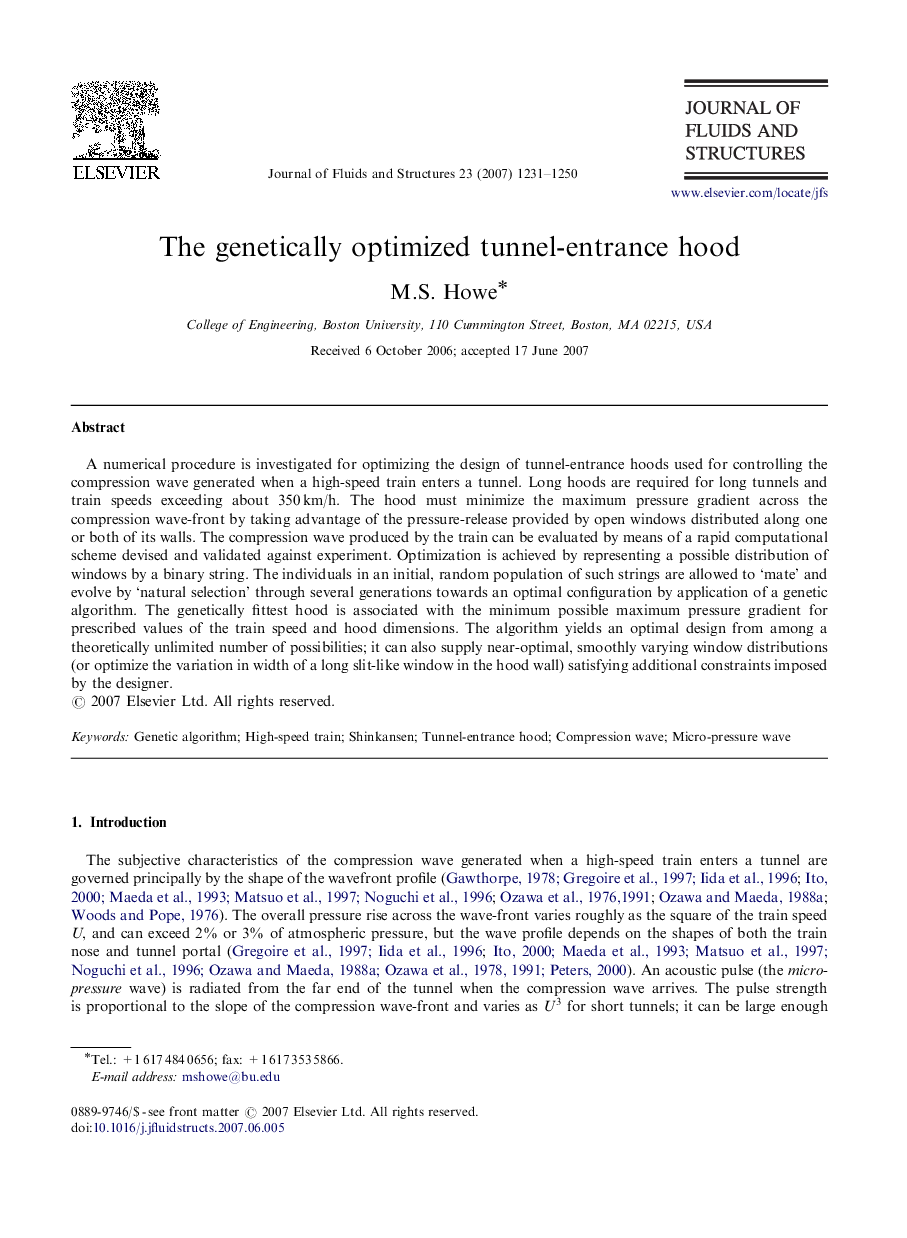| Article ID | Journal | Published Year | Pages | File Type |
|---|---|---|---|---|
| 789859 | Journal of Fluids and Structures | 2007 | 20 Pages |
A numerical procedure is investigated for optimizing the design of tunnel-entrance hoods used for controlling the compression wave generated when a high-speed train enters a tunnel. Long hoods are required for long tunnels and train speeds exceeding about 350 km/h. The hood must minimize the maximum pressure gradient across the compression wave-front by taking advantage of the pressure-release provided by open windows distributed along one or both of its walls. The compression wave produced by the train can be evaluated by means of a rapid computational scheme devised and validated against experiment. Optimization is achieved by representing a possible distribution of windows by a binary string. The individuals in an initial, random population of such strings are allowed to ‘mate’ and evolve by ‘natural selection’ through several generations towards an optimal configuration by application of a genetic algorithm. The genetically fittest hood is associated with the minimum possible maximum pressure gradient for prescribed values of the train speed and hood dimensions. The algorithm yields an optimal design from among a theoretically unlimited number of possibilities; it can also supply near-optimal, smoothly varying window distributions (or optimize the variation in width of a long slit-like window in the hood wall) satisfying additional constraints imposed by the designer.
